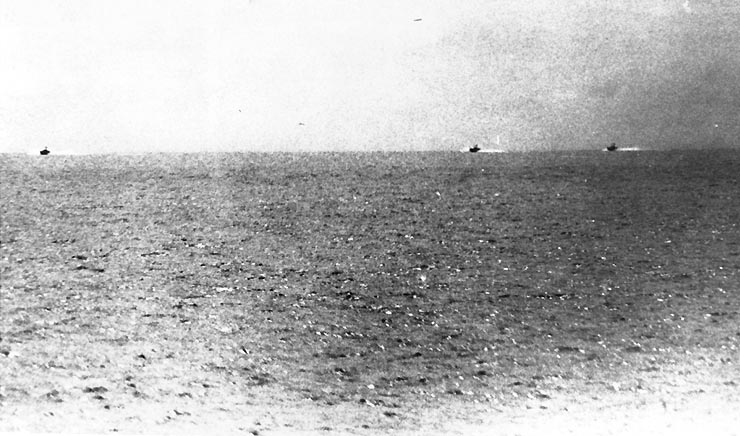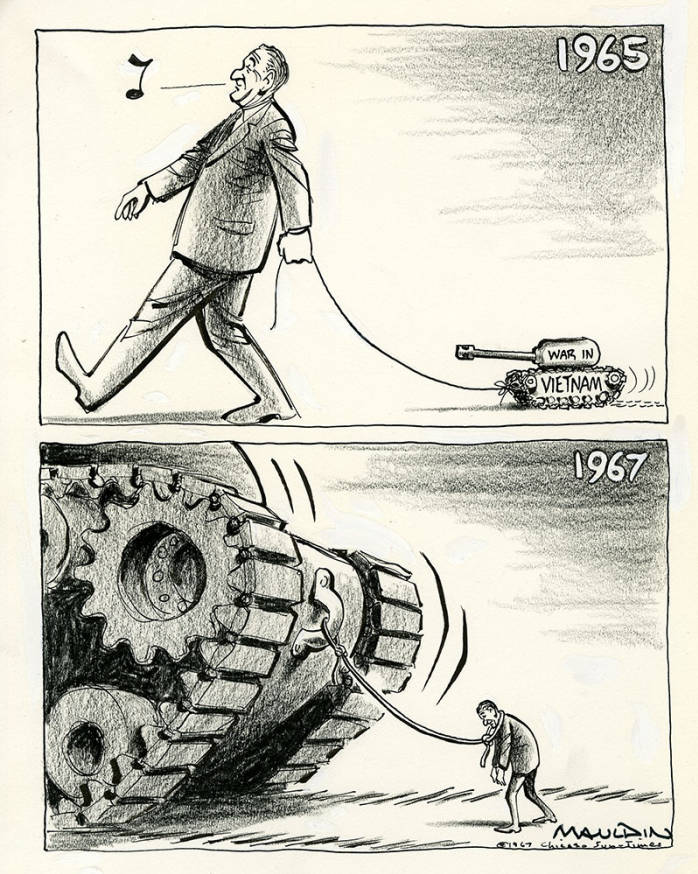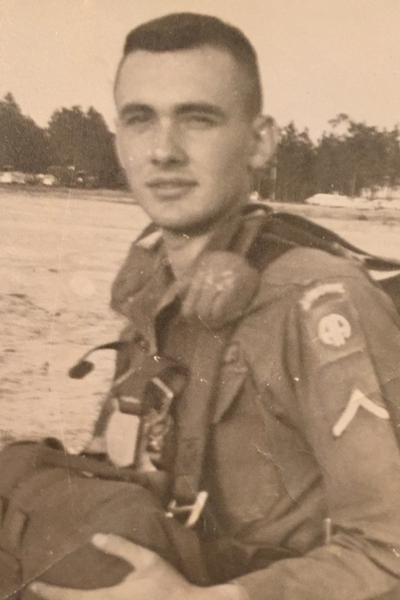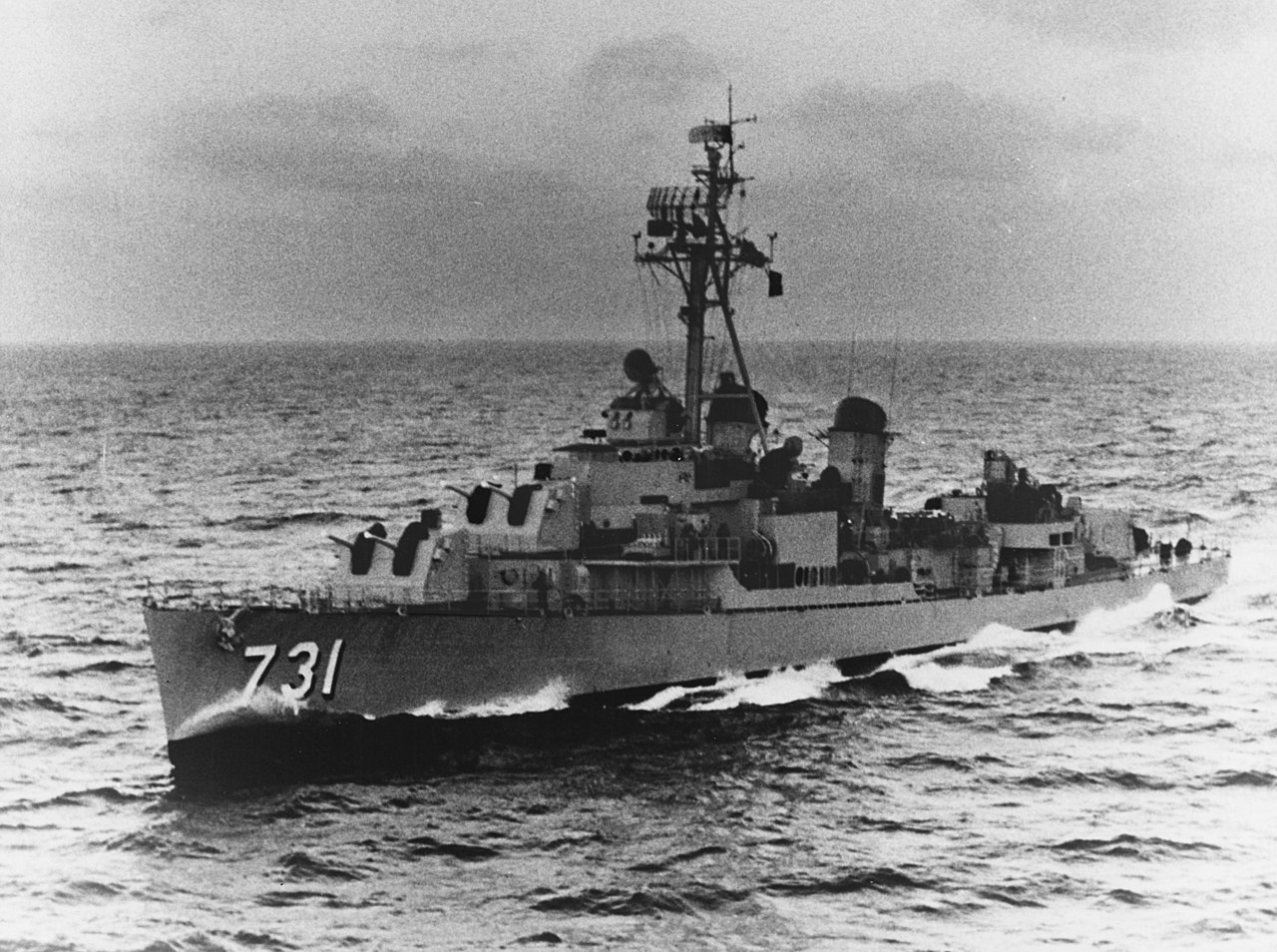Destroyers Attacked in Gulf of Tonkin
Background on the Vietnam War
The First Indochina War (1946 – 1954) began when Ho Chi Minh Declared Independence from France. Most of the fighting took place around Tonkin, and by 1951 the Vietnamese and French forces had reached a stalemate. The French defeat in the 1954 Battle of Dien Bien Phu was a turning point in the war and led to the opening of the Geneva peace meeting on April 26, 1954. The Geneva Conference has had lasting effects on Southeast Asia by dismantling the French colonial empire and creating the new states of the Democratic Republic of Vietnam (North Vietnam), the State of Vietnam (South Vietnam), the Kingdom of Cambodia, and the Kingdom of Laos.
The Vietnam War (1955-1974), which is also known as the Second Indochina War, was officially fought between North Vietnam and South Vietnam. It is generally considered to be a proxy war of the Cold War era. With the Soviet Union and China supporting the North Vietnamese and the United States, France, and other anti-communist allies supporting the South Vietnamese.
The Gulf of Tonkin Incident
 From 1955 to 1964, the United States supported South Vietnam. This support included signal intelligence patrols in the Gulf of Tonkin. On August 2, 1964, the USS Maddox was participating in a DESOTO (DeHaven Special Operations off TsingtaO) patrol with special signal equipment near North Vietnam’s territorial waters. The DESOTO patrols had orders to locate and identify coastal radar transmitters and navigation aids and monitor ship movements.
From 1955 to 1964, the United States supported South Vietnam. This support included signal intelligence patrols in the Gulf of Tonkin. On August 2, 1964, the USS Maddox was participating in a DESOTO (DeHaven Special Operations off TsingtaO) patrol with special signal equipment near North Vietnam’s territorial waters. The DESOTO patrols had orders to locate and identify coastal radar transmitters and navigation aids and monitor ship movements.
The USS Maddox was approached by three North Vietnamese Navy torpedo boats. The Maddox fired warning shots and the North Vietnamese Navy’s torpedo boats responded with machine gun fire and torpedoes. While the United States had no casualties from this engagement, it resulted in an increase in the hostilities between the parties involved.
On August 4, the USS Maddox and the USS Turner Joy fired on radar returns. Captain John Herrick, commander of the Maddox task force, reported that the ships were being attacked by North Vietnamese boats when no North Vietnamese boats were present. An intelligence failure resulted in the interpretation that the attack was real, leading to President Lyndon B. Johnson’s administration to increase support for South Vietnam.
America’s Further Involvement in the Vietnam War
On August 7, 1964, the United States Congress passed the Gulf of Tonkin Resolution (Public Law 88-408) which gave President Lyndon B. Johnson the authorization to use conventional military force in Southeast Asia without a formal declaration of war by Congress. This authorization led to the continued buildup of American forces in Vietnam, Cambodia, and Laos.
Overall, the general public was not supportive of the Vietnam War with some individuals citing the lack of a formal declaration as part of their rationale. Many protests were held on American college campuses, during this time period. Some individuals burned their draft cards in these public protests.
In 1968, the Tet Offensive began escalating the conflict. North Vietnamese People's Army of Vietnam (PAVN) launched their attack against forces of the South Vietnamese Army of the Republic of Vietnam (ARVN), the United States Armed Forces and their allies on January 30, 1968. The offensive continued through the intense fighting at the Battle of Hue (31 January 1968 – 2 March 1968).
The Vietnam War formally ended after the Fall of Saigon to North Vietnamese forces on April 30, 1975.
Tet and the Battle of Hue
 Would you like to learn more about the Tet Offensive and the Battle of Hue? Visit the Museum & Library and check out our latest exhibit which features historic photography of U.S. Marines during the brutal Battle of Hue in 1968. Created by Tactile Images, and Stars and Stripes photographer John Olson, the exhibit features 10 tactile, or 3-dimensional, images developed from original photographs. Embedded with touch-activated sensors that provide audio interviews with the Marines documented in the photos, the three-dimensional tactile images allow blind and low vision individuals to experience photography in a unique way.
Would you like to learn more about the Tet Offensive and the Battle of Hue? Visit the Museum & Library and check out our latest exhibit which features historic photography of U.S. Marines during the brutal Battle of Hue in 1968. Created by Tactile Images, and Stars and Stripes photographer John Olson, the exhibit features 10 tactile, or 3-dimensional, images developed from original photographs. Embedded with touch-activated sensors that provide audio interviews with the Marines documented in the photos, the three-dimensional tactile images allow blind and low vision individuals to experience photography in a unique way.
Holt Oral History
 Aniceto “Al” Rivera, Sergeant (E-5)
Aniceto “Al” Rivera, Sergeant (E-5)
Encapsulating the familiar story of those that immigrate to the U.S. and then turn around and give back by serving in our military, Sgt. Aniceto “Al” Rivera’s Cuban origins lead him to want to serve with the 82nd Airborne Division, knowing that they would likely be the first to be deployed in the Latin region, and ultimately giving him a chance to play an important role in Operation Power Pack where he was a translator between the U.S., the Rebels, the locals, and more in the Dominican Republic.
Vietnam POWs: A Conversation with Everett Alvarez Jr.
For further reading, check out these books from our Library:
E-Books:
Unforgotten in the Gulf of Tonkin
Print Books:
Cleaver, Thomas McKelvey. The Tonkin Gulf Yacht Club: Naval Aviation in the Vietnam War. Oxford, UK: Osprey Publishing, 2021.
Francillon René J. Tonkin Gulf Yacht Club: U.S Carrier Operations Off Vietnam. Annapolis, Md.: Naval Institute Press, 1988.
Schreadley, R. L. From the Rivers to the Sea: The United States Navy in Vietnam. Annapolis, Md.: Naval Institute Press, 1992.
